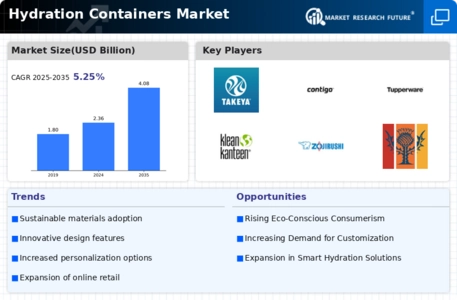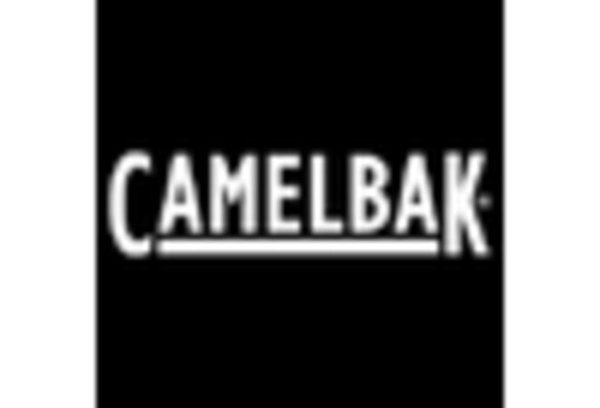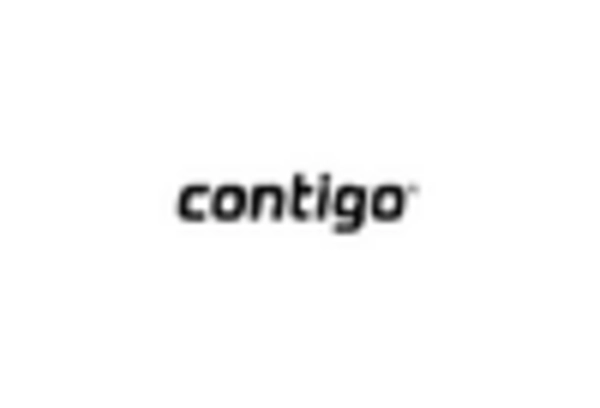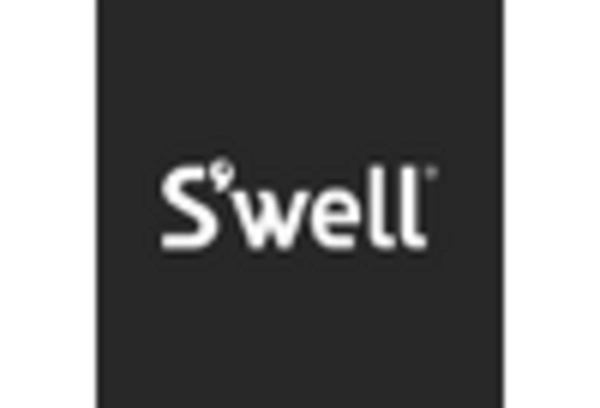The Hydration Containers Market is a dynamic sector characterized by a diverse range of products aimed at meeting the hydration needs of consumers across various demographics and lifestyles. This market encompasses a wide array of containers, including water bottles, hydration packs, and insulated containers, catering to everything from daily hydration to outdoor adventures. The competitive landscape features numerous players, each striving to differentiate their offerings through innovative designs, sustainable materials, and functional features.
As consumer preferences continue to evolve towards health and wellness, convenience, and sustainability in product choices, companies in this market are increasingly focused on utilizing advanced technology and materials to enhance product performance and consumer satisfaction. Furthermore, the influence of online retail is reshaping distribution, allowing brands to reach a broader audience and engage customers through digital marketing strategies and social media platforms. Takeya is a notable player in the Hydration Containers Market, recognized for its commitment to providing high-quality and innovative hydration solutions.
The company has built a strong reputation for its insulated water bottles, which are designed to keep beverages cold or hot for extended periods, catering to the needs of active consumers. Its products are often highlighted for their durability, stylish designs, and ease of use, appealing to a wide range of customers, from fitness enthusiasts to casual users. Takeya’s focus on sustainability is also a key strength, as many of its products are constructed from BPA-free materials and are designed for reusability, aligning with growing consumer demand for environmentally friendly products.
Additionally, Takeya's investment in branding and marketing, combined with a solid online presence, has helped it establish a loyal customer base, positioning it competitively within the hydration containers segment. Contigo is another significant competitor in the Hydration Containers Market, known for its innovative solutions that prioritize convenience and functionality. The company has gained recognition for its patented Autoseal technology, which prevents spills and leaks, making its products particularly appealing to on-the-go consumers. Contigo's product range includes various styles, such as travel mugs, tumblers, and reusable water bottles, designed to fit seamlessly into active lifestyles.
The brand focuses on creating practical and visually appealing products, which has helped it capture a share of the market. Its commitment to developing user-friendly features, along with a strong emphasis on quality and design, enhances its competitive edge. Additionally, Contigo fosters an image of reliability and effectiveness, further solidifying its presence in the hydration containers market. Through strategic marketing initiatives and collaborations, Contigo continuously seeks to expand its reach and improve brand visibility in this ever-evolving sector.


















Leave a Comment